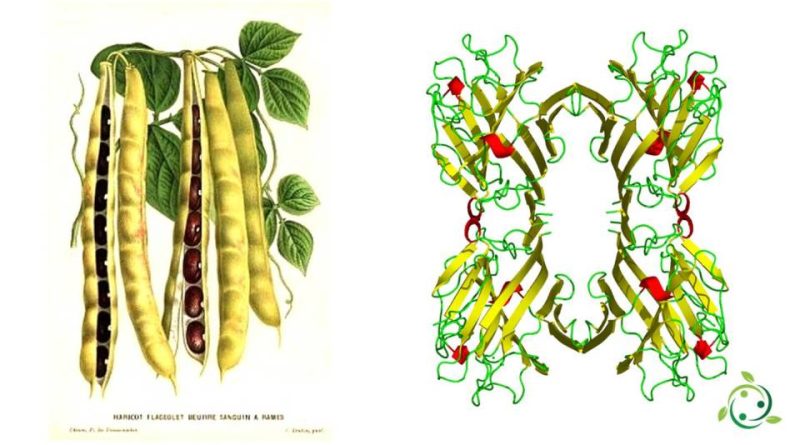Fasin
Fasin
Fasin is a toxic phytohemagglutinin contained in soy and other raw legumes.
Fasin is chemically a polypeptide containing glutamic acid, aspartic acid, serine, alanine, tyrosine, lysine and arginine.
There are two forms of Fasin called PHA-L and PHA-E. Fasina has the property of causing blood cells to clot and therefore we distinguish PHA-L, which causes agglutination of white blood cells (Leukocytes) from PHA-E, which causes agglutination of red blood cells (Erythrocytes).
Fasin is therefore toxic to humans.
Fasin poisoning can be caused by the ingestion of even 5 raw beans and symptoms begin to manifest within three hours, starting with very intense nausea and vomiting and continuing with diarrhea. Small amounts can be recovered within four to five hours without the need for medical intervention, but more massive intakes can lead to gastrointestinal bleeding and death.
The heat destroys the fasina, modifying its structure, and it only takes 15 or 20 minutes of cooking to make it harmless.
Even after a shorter cooking, however, the fasina content is so low that legumes can be consumed without danger. The sprouts of beans and other legumes also contain fasina, but in reduced quantities, and to neutralize it and also eliminate residues it is recommended to blanch the sprouts briefly before consumption.
Cooking water also presents risks: before the protein is destroyed by heat, it is possible that legumes have already released a good part of it. Therefore it is advisable to throw away the water used to blanch the sprouts, and that in which the legumes have been cooked only briefly.
Liquids in which beans or other legumes have been cooked for a long time, such as soups, are harmless.
Warning: The information shown is not medical advice and may not be accurate. The contents are for illustrative purposes only and do not replace medical advice.

